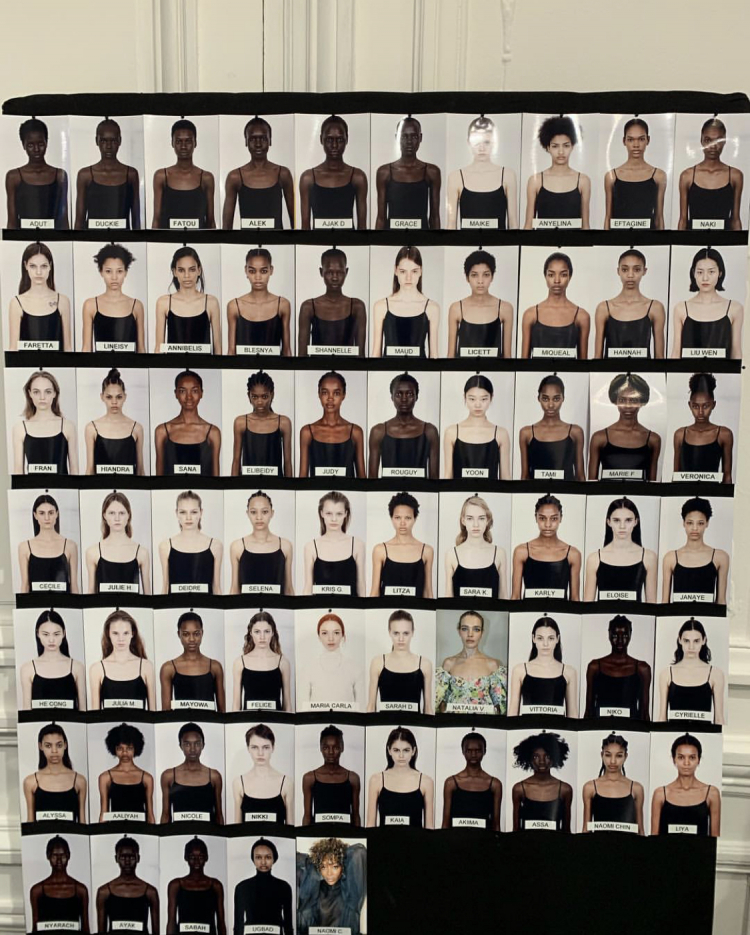The Ongoing Battle for Diversity in the Fashion Industry

Marketing trends in the fashion industry go in and out faster than it takes to finish your morning espresso. And what’s the latest trend in fashion? Diversity.
‘Inclusive’ and ‘diversity’ are currently major buzzwords in the fashion industry. As younger generations become more socially conscious, brands are scrambling to get on the diversity train as a marketing strategy to increase profit. However, a new report is revealing how the fashion industry is still very much an exclusive club.
The Council of Fashion Designers of America (CFDA) recently released the Insider/Outsider report, the organization’s first ever report on the state of diversity in the American fashion industry. While the report lacks exact statistics, it discusses how “outsiders,” in this case racial minorities, women and members of the LGBTQ+ community, are not being hired for leadership roles in fashion companies. The report outlines how the absence of outsiders in leadership roles create a unbalanced power dynamic in which the majority-white insiders hire people who are similar to them, making it difficult for “outsiders” to break into these companies.
On the outside, the fashion world appears to be more diverse than ever before. In many ways, it is. Racial diversity on the runway hit a record breaking high during Spring 2019 fashion month. According to Fashion Spot’s biannual diversity report, 36.1 percent of models were people of color. This is more than double from 2015. Of the four main fashion cities, New York had the highest percentage of diversity with 44.8 percent. Milan reported the lowest percentage of diverse models at 29.9 percent. There was also an increase of transgender and plus size models on the runway.
Models at the Valentino Haute Couture Show S/S19
One incentive for brands that have more diverse runways is that they often get more press. Rihanna’s Spring 2019 show at New York Fashion Week nearly broke the internet with her use of racially diverse and plus size models, including having nine month pregnant Slick Wood’s strut down the runway in lingerie. However, the scarcity of diversity in leadership roles in the fashion industry is the next issue that needs to be tackled.
The lack of diversity in leadership roles is apparent in blunders made by both luxury and fast fashion brands. Just look at Prada, who, in December 2018, was accused of using racist blackface imagery in the window display of their Soho store to promote their equally racist new key chain charms. In response to the blow back, Prada announced they would be creating a new diversity council to prevent this from happening in the future. H&M went through a similar problem after receiving backlash for featuring a black model in a ‘monkey’ sweatshirt, causing celebrity partners such as the Weeknd to leave the company. Even more recently, Gucci released a blackface sweater, causing the internet to blow up.
To help solve the battle for increased diversity, the CFDA has partnered with PVH Corporation and Bethann Hardison, founder of The Diversity Coalition, to improve the companies pre-existing programs such as peer-to-peer mentoring, business network opportunities, educational & awareness programs, and leadership skill set training.
The lack of diversity in leadership roles is a deeply rooted systemic problem in all industries, not just fashion. The CFDA report is a great first step, as acknowledging the problem is the only way to move forward. With a wider range of voices, the fashion industry can only go up.
You can read the full CFDA report here.
Another interesting read on the topic is Tim Blanks interview with Miuccia Prada.







